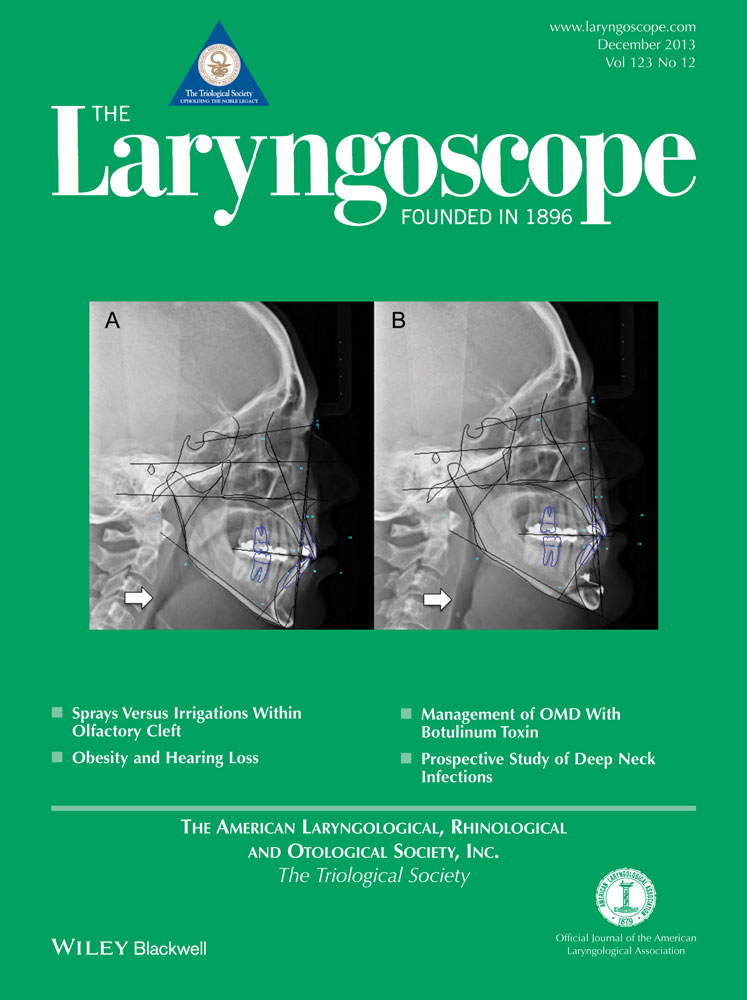Hyaluronic acid gel weight: A nonsurgical option for the management of paralytic lagophthalmos
The authors have no funding, financial relationships, or conflicts of interest to disclose.
Abstract
Objectives/Hypothesis
Management of lagophthalmos should be a priority in the treatment of patients with facial palsy. The aim of the study was to evaluate the safety and efficacy of injecting hyaluronic acid gel into the upper eyelid as a nonsurgical alternative for patients with temporary facial palsy.
Method/Study Design
Retrospective study of 26 patients treated with hyaluronic acid gel injected into the pretarsal region of the upper eyelid. Measurements taken before and after treatment were standardized and compared using digitized photographs. Patients were followed up for 1 year, and overall outcomes were assessed.
Results
All patients initially demonstrated improvement in lagophthalmos, which decreased to 0.0 mm. After 1 month, a significant increase in lagophthalmos was observed in two patients (initial fissure of 8 and 9 mm), and a platinum weight was implanted to control keratopathy. The remaining patients (initial lagophthalmos below 6.5 mm) maintained the improvement until facial restoration. Only three patients had recurrent lagophthalmos (2 mm) due to resorption, which was resolved by injecting an additional 0.3 cc. The mean improvement in lagophthalmos was 4.6 mm (range, 3.5–6.5 mm). Complications included transient ecchymosis and minimal blepharoptosis due to nonreabsorption in five patients. These patients were successfully treated with hyaluronidase.
Conclusions
Hyaluronic acid gel has proven effective in reducing paralytic lagophthalmos and controlling keratopathy in patients with temporary facial palsy, especially those with palpebral fissure with attempted closure no greater than 6.5 mm. Injection of hyaluronic acid gel is safe, quick, and easily performed. In addition, it is more cost-effective than surgery.
Level of Evidence
4. Laryngoscope, 123:E91–E96, 2013




